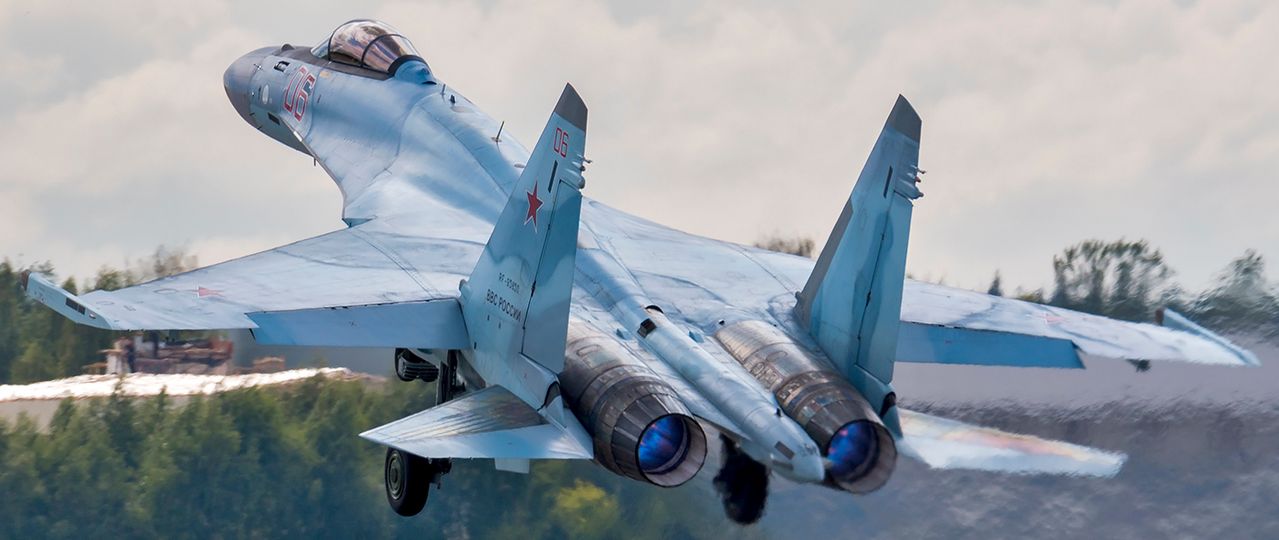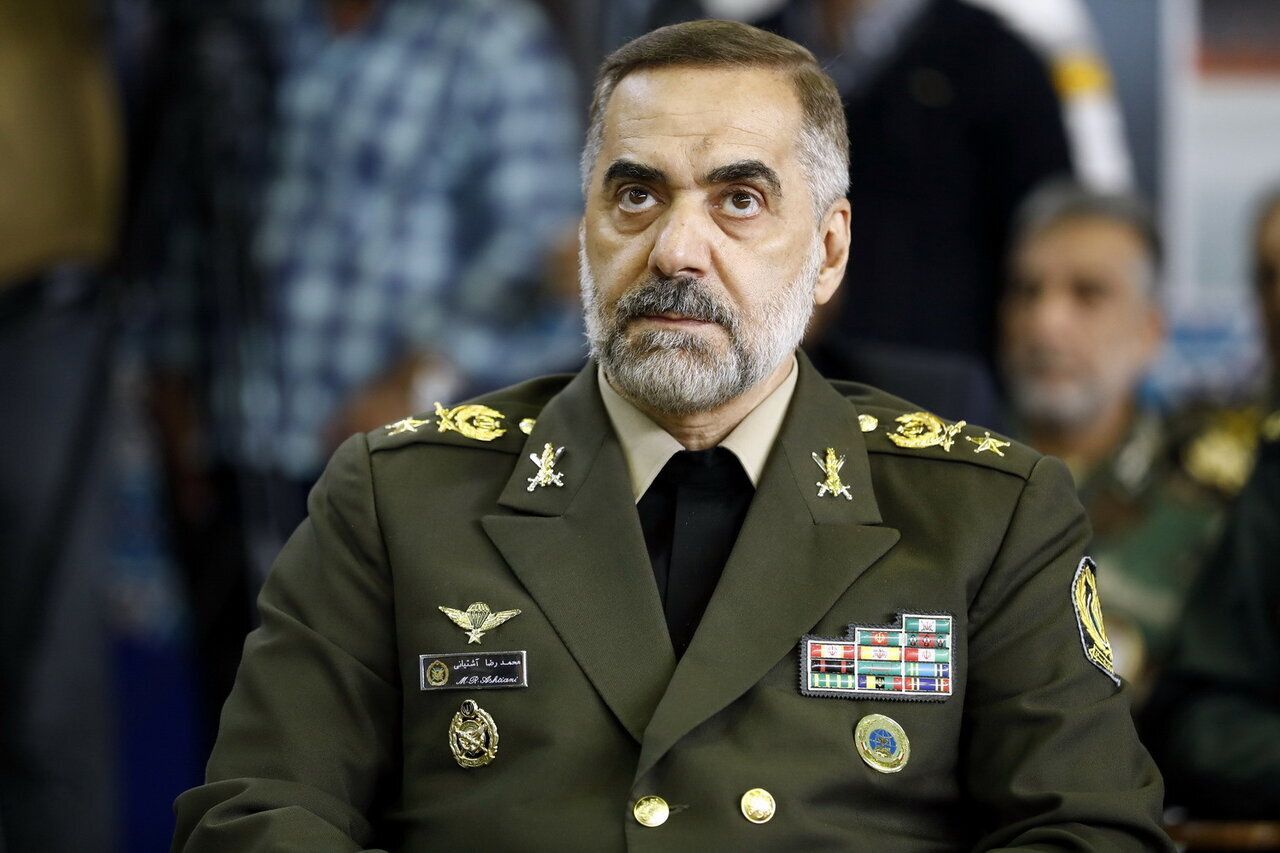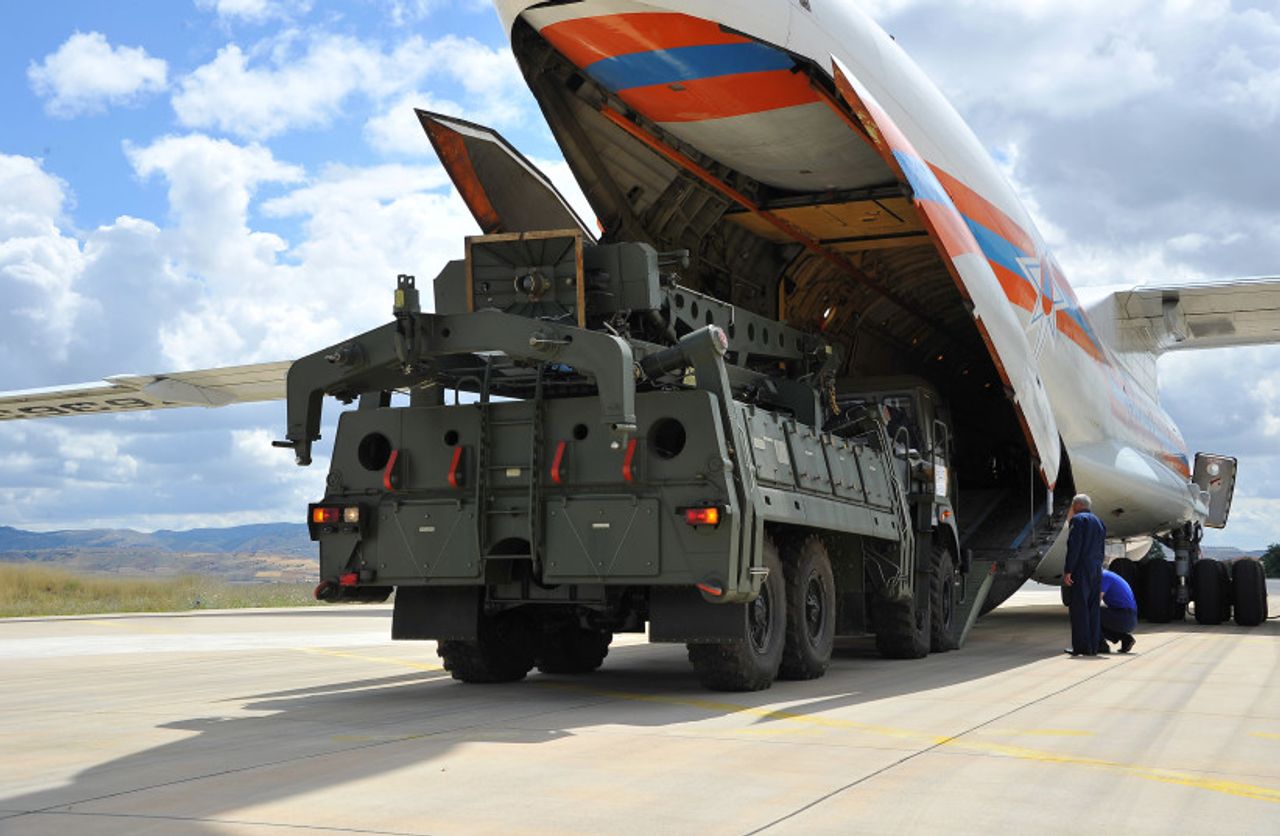HAIDER
ELITE MEMBER

- Joined
- May 21, 2006
- Messages
- 33,771
- Reaction score
- 14
- Country
- Location

A Russian Aerospace Forces Su-35S during a standard takeoff procedure
Iran Implies Collapse Of Deal To Buy Russia’s Su-35 Warplanes
8 hours ago3 minutesAuthor: Iran International Newsroom
Conflict - MilitaryIranForeign Relations
Iran’s defense minister has tacitly confirmed that the deal to buy long-sought Sukhoi Su-35 fighter jets from Russia has collapsed.
Mohammad-Reza Gharaei Ashtiani was asked on Wednesday about the status of the deal – which was purportedly finalized last year. He replied the country has the capability to produce the fighters domestically, suggesting a possible shift in plans.
Iranian officials announced on several occasions during the past few years that Russia would sell several Sukhoi Su-35 fighter jets to Iran, but such claims never yielded any results.
Ashtiani, who sounded reluctant to provide any details, said: "At some point, we made a deal for the purchase, but we came to the conclusion that we have the ability to produce (fighter jets) in the country." However, he also mentioned that the authorities are "investigating the situation" and could reconsider the purchase if deemed necessary.

Iran's Defense Minister Brigadier General Mohammad Reza Ashtiani
In 2018, Iran said it had started production of the locally designed Kowsar fighter for use in its air force. Some military experts believe the jet is a carbon copy of an F-5 first produced in the United States in the 1960s.
Different scenarios have been speculated as to the reason behind the collapse of the deal with Russia. There are speculations that Israel may have influenced Russia's decision to withhold the advanced fighters from Iran. The American government has also expressed concerns about the extensive military cooperation between Russia and Iran, considering it potentially harmful to regional stability.
A more plausible explanation was given by aviation expert and author Babak Taghvaee, who said the obstacle is Russia's refusal to transfer crucial technology for producing Su-35 parts in Iran and providing knowledge for domestic maintenance for the next 30 years.
He cited Commander of the Iranian Army’s Air Force Brigadier General Hamid Vahedi as telling his sources that "for now, the General Staff of the Armed Forces has opposed procurement of Su-35SE multirole fighter jets from Russia as Russian government refuses to transfer technology for production of their parts in Iran as well as to provide the knowledge for maintaining the aircraft domestically for the next 30 years."

Sukhoi Su-35 jet fighters of the "Sokoly Rossii" (Falcons of Russia) aerobatic team fly in formation during a rehearsal for the airshow in Krasnoyarsk, Russia August 1, 2019.
Taghvaee added that Russians want to sell only 25 Su-35Es previously ordered by Egypt without proper maintenance, weapons, spare part support and simulators.
“On the basis of the lessons learned from the sale and delivery of Su-30SM fighter jets to Armenia and the insidious decision of the Russian government for not allowing Armenians to operate them against Azerbaijan during the recent Karabakh war, it is highly possible that the untrustworthy Russians do the same to the Iranian air force in case of their intention for using Su-35SEs in war," he added.
In September, Vahedi said that buying Su-35s is on the agenda of the Air Force but the country has no plans to buy Sukhoi Su-30s, both developed from Sukhoi Su-27 which was a Soviet-origin twin-engine supermaneuverable fighter aircraft. Su-35 is single-seat but Su-30 is a two-seat, multi-role fighter. According to reports, the Army’s Air Force needs at least 64 aircraft, 24 of which will come from Egypt's order which remained undelivered due to US pressure on Cairo.

First parts of a Russian S-400 missile defense system are unloaded from a Russian plane at Murted Airport, known as Akinci Air Base, near Ankara, Turkey, July 12, 2019.
Iran has also expressed interest in obtaining other advanced military tech from its partner in crime such as air-defense system S-400, a mobile, surface-to-air missile system. Iran has supplied hundreds of kamikaze drones to Russia that have been used to target Ukraine's military and civilian infrastructure. Moscow denies that its forces use Iranian-built drones in Ukraine, although many have been shot down and recovered there.
Iran’s air force has only a few dozen strike aircraft: Russian jets as well as ageing US models acquired before the Iranian revolution of 1979. Instead, Iran has developed a variety of drones and missiles seen as a threat for other regional countries, especially Israel.
Earlier this week, the Israeli army successfully dropped bunker-busting bombs intended for the destruction of special trenches from its F-35 fighters, the Israeli Channel 14 reported, highlighting it as a clear message to Iran. Israel is the second country in the world after the US to test this capability, according to the report.
--------------------------------------------------------------------------------------------------------------------------------------
Iran Paid for Su-35 Jets, But Russia Won’t Deliver Them
PolicyEarlier this month, Brigadier General Hamid Vahedi, Iran’s air force commander, ended weeks of speculation about the imminent delivery Russian Sukhoi Su-35 fighter jets. “Regarding the purchase of Su-35 fighter jets [from Russia], we need them, but we do not know when they will be added to our squadron. This is related to the decision of [Iran’s] high-ranking officials,” he stated in an interview on state TV.
Vahedi's comments sparked speculation about dysfunction in the Russia-Iran partnership, including that Israel had successfully convinced Russia to postpone delivery of the advanced fighter jets to Iran.
While officials in Tehran continue to pursue a partnership with Russia, it is increasingly clear that Russian officials see their relationship with Iran as little more than a card that can be played according to their needs.
Russia’s potential sale of Su-35 jets to Iran has been connected to the deeper military cooperation between the two countries since the Russian invasion of Ukraine in February 2022. Iranian drones are being used by Russian forces to bomb Ukrainian cities. The first drones were transferred from Iran to Russia around one year ago.
But Iran has been waiting for far more than a year to receive the Su-35, which would prove a major upgrade in capabilities for Iran’s aging air force, largely comprised of American jets in service since before the 1979 revolution.
According to one current and one former diplomat with direct knowledge of the matter, Iran made “full payment” for 50 Su-35 fighter jets during the second term of President Hassan Rouhani. The officials requested anonymity given the sensitivity of Iran’s arms purchases. According to the former diplomat, at the time of purchase Russia had promised to deliver the Su-35s in 2023. Neither source expects that the deliveries will be made this year.
A third source, a security official, speaking on background, expressed disappointment that Vahedi’s “uncoordinated interview” had called attention to the fact that the deliveries were now in doubt. Iranian officials feel embarrassment over Russia’s failure to adhere to commitments.
The delay in the delivery could be traced to the strong relationship between Russia and Israel. In June, Axios reported that Israeli officials confronted Russian counterparts over Russia’s growing military cooperation with Iran and the possibility of Russia providing Iran advanced weapon systems. Israeli Prime Minister Benjamin Netanyahu disclosed the “open and frank” dialogue with Russian officials in a closed-door hearing with Israeli lawmakers on June 13.
In the view of the former diplomat, due to their arrogance, Iranian hardliners “fell into the trap” of believing that they were an equal partner to Russia, simply because “the Russians are queuing up to buy arms from them.”
The drone transfers have contributed to Iran’s political isolation, giving Western officials the impression of deepening cooperation between Russia and Iran, even as the Iranian Foreign Ministry continues to claim that Iran remains a neutral party in the Ukraine war. According to the security official, neutrality remains the consensus position of the Iran’s Supreme National Security Council, but he warned that country’s military brass may not all share that same view.
Notwithstanding the ambitions of Iranian generals, Russia continues to treat Iran far worse than an ally. Earlier this week, Russia issued a joint statement with the Gulf Cooperation Council (GCC), affirming the United Arab Emirate’s claims on three Iranian islands: the Greater Tunb, the Lesser Tunb, and Abu Musa. The statement enraged Iranian officials. Ali Akbar Velayati, a senior advisor to Iran’s Supreme Leader, called Russia’s assent to the statement “a move borne of naivety.” Iran’s foreign minister and its government spokesperson stressed in statements that Iran will not tolerate claims on the three islands from any party. The officials had made such statements before—a China-GCC joint statement from December 2022 caused a similar public outcry.
As Iranian officials are forced to defend their ties with Russia once again, a question remains. Why does Iran have so little leverage over Russia, even after the Russian invasion of Ukraine? The answer lies in the mindset of Iranian officials.
Back in May, Iran’s Supreme Leader, Ali Khamanei, declared that “Dignity in foreign policy means saying no to the diplomacy of begging.” The slogan “diplomacy of begging” has become popular among conservatives and the hardliners, who have used it to condemn the signing of the Joint Comprehensive Plan of Action (JCPOA) and to accuse former Iranian foreign minister Javad Zarif of begging the West for sanctions relief. But if begging the West for sanctions relief is wrong, why are hardliners eager to beg Russia for the Sukhoi jets?
Tehran’s ties with Moscow were never built on trust. They were built on mutual fears and mutual needs. Were the administration of President Ebrahim Raisi to realize that looking to the West does not preclude political and economic relations with Russia and China, Iran could strengthen its position in the Middle East and regain leverage in its relationship with Russia. Until then, the Russians will continue to look at their relationship with Iran as a nothing more than playing card.
Last edited:
















